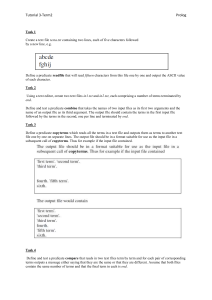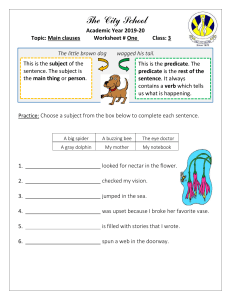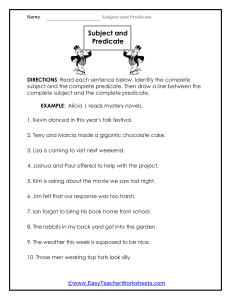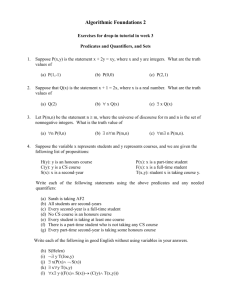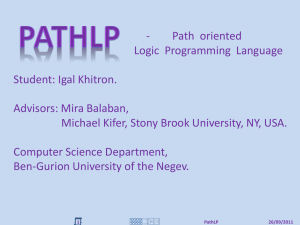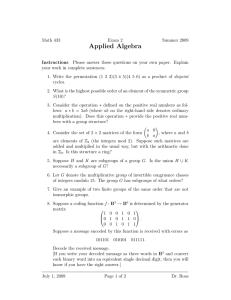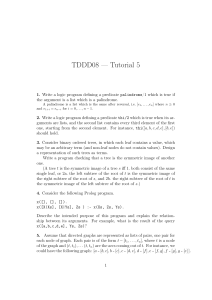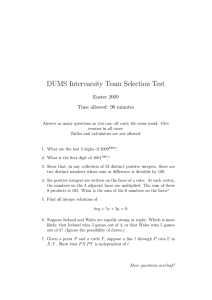LPN 10 Exercises
advertisement
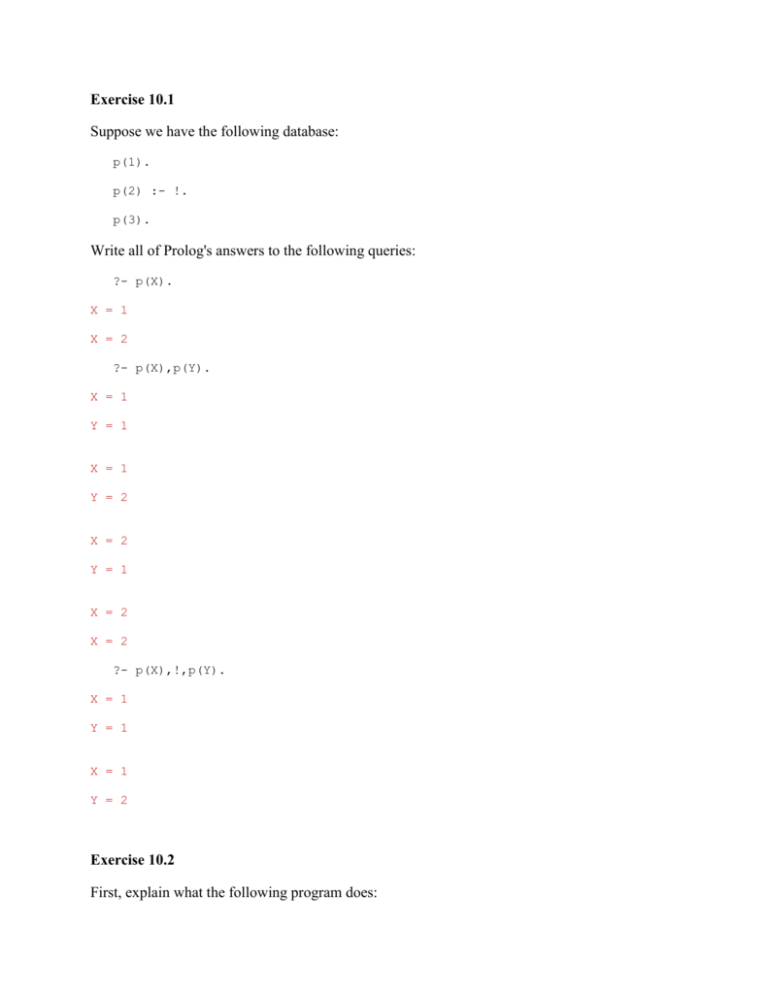
Exercise 10.1 Suppose we have the following database: p(1). p(2) :- !. p(3). Write all of Prolog's answers to the following queries: ?- p(X). X = 1 X = 2 ?- p(X),p(Y). X = 1 Y = 1 X = 1 Y = 2 X = 2 Y = 1 X = 2 X = 2 ?- p(X),!,p(Y). X = 1 Y = 1 X = 1 Y = 2 Exercise 10.2 First, explain what the following program does: class(Number,positive) :- Number > 0. class(0,zero). class(Number, negative) :- Number < 0. The program determines the class of a number (positive if greater than 0, zero if equal to 0, or negative if less than 0). Second, improve it by adding green cuts. class(Number,positive) :- Number > 0, !. class(0,zero) :- !. class(Number,negative) :- Number < 0, !. Exercise 10.3 Without using cut, write a predicate split/3 that splits a list of integers into two lists: one containing the positive ones (and zero), the other containing the negative ones. For example: split([3,4,-5,-1,0,4,-9],P,N) should return: P = [3,4,0,4] N = [-5,-1,-9]. split([],[],[]). split([X|Xs],[X|P],N) :- X >= 0, split(Xs,P,N). split([X|Xs],P,[X|N]) :- X < 0, split(Xs,P,N). Then improve this program, without changing its meaning, with the help of cut. split([],[],[]) :- !. split([X|Xs],[X|P],N) :- X >= 0, !, split(Xs,P,N). split([X|Xs],P,[X|N]) :- X < 0, !, split(Xs,P,N).



